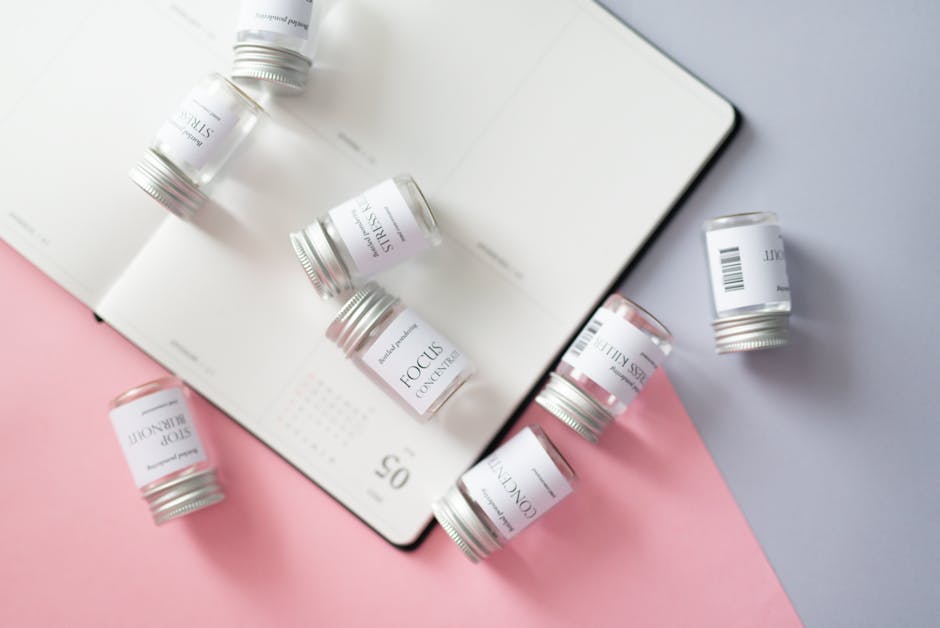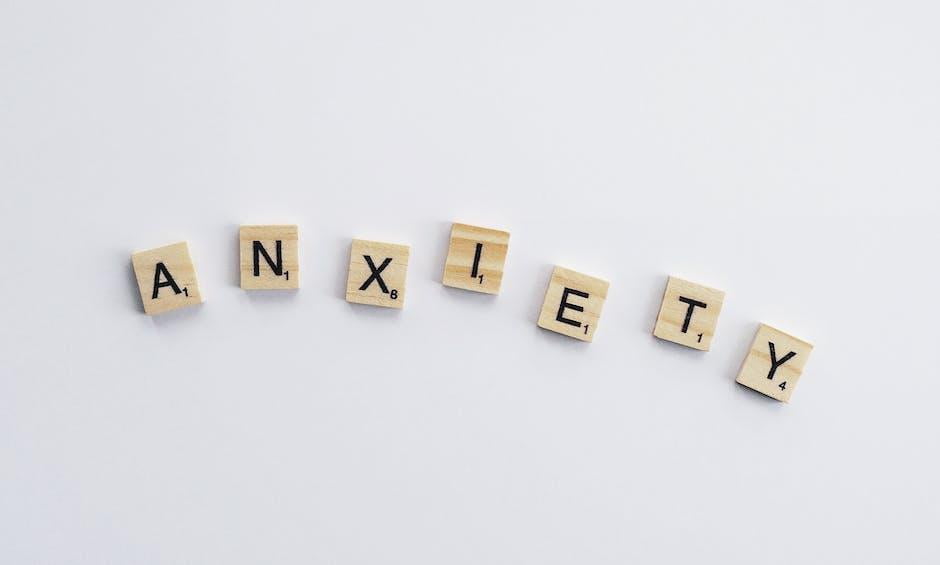Understanding Anxiety and Panic Attacks
Definition of Anxiety and Panic Attacks
Anxiety is a natural response to stress, characterized by feelings of fear or apprehension about what’s to come. It can manifest in various forms, such as generalized anxiety disorder, social anxiety disorder, and specific phobias. On the other hand, panic attacks are sudden episodes of intense fear that trigger severe physical reactions when there is no real danger or apparent cause. They are a symptom of panic disorder, a type of anxiety disorder.
Common Symptoms of Anxiety and Panic Attacks
While symptoms can vary, common signs of anxiety include restlessness, excessive worry, and difficulty concentrating. Panic attacks, however, are often more intense and may include palpitations, sweating, trembling, shortness of breath, and a feeling of impending doom.
Causes and Triggers of Anxiety and Panic Attacks
Both anxiety and panic attacks can be triggered by various factors, including genetics, brain chemistry, personality, and life events. Stressful situations, certain health conditions, and even certain substances or medications can also trigger these conditions.

Strategies for Managing Anxiety
Mindfulness Techniques
Mindfulness techniques can help manage anxiety by bringing your attention to the present moment. This can help you break free from the cycle of negative thought patterns that fuel anxiety.
Deep Breathing Exercises
Deep breathing can help to reduce anxiety by slowing your heartbeat and lowering or stabilizing your blood pressure. This technique involves inhaling deeply through your nose, holding your breath for a few seconds, and then exhaling slowly through your mouth.
Meditation and Yoga
Both meditation and yoga can help to reduce anxiety by promoting relaxation and stress reduction. Regular practice can help to improve your mental well-being and overall quality of life. For more information on these techniques, visit our post on how to manage stress and anxiety every day.
Cognitive Behavioral Techniques
Cognitive behavioral techniques can help you to identify and challenge negative thought patterns, helping to reduce anxiety.
Identifying and Challenging Negative Thoughts
Identifying your negative thoughts and challenging them can help to reduce anxiety. This involves recognizing your anxious thoughts, assessing their validity, and replacing them with more positive or realistic thoughts.
Exposure Therapy
Exposure therapy involves gradually and repeatedly facing your fears until they no longer cause you anxiety. This technique can be particularly effective for specific phobias and obsessive-compulsive disorder.
Lifestyle Changes
Making certain lifestyle changes can also help to manage anxiety.
Regular Exercise
Regular exercise can help to reduce anxiety by boosting your mood and acting as a natural stress reliever. Aim for at least 30 minutes of moderate-intensity exercise most days of the week.
Balanced Diet
A balanced diet can also help to reduce anxiety. Try to incorporate a variety of fruits, vegetables, lean proteins, and whole grains into your diet, and limit your intake of processed foods and sugary drinks.
Adequate Sleep
Getting enough sleep is crucial for managing anxiety. Aim for 7 to 9 hours of sleep per night, and try to maintain a consistent sleep schedule.

Strategies for Managing Panic Attacks
Grounding Techniques
Grounding techniques can help to manage panic attacks by helping you to stay connected to the present moment.
The 5-4-3-2-1 Method
The 5-4-3-2-1 method involves identifying five things you can see, four things you can touch, three things you can hear, two things you can smell, and one thing you can taste. This technique can help to distract you from your panic symptoms and bring you back to the present moment.
Focusing on an Object
Focusing on an object can also help to manage panic attacks. This involves choosing an object and focusing all your attention on it, noting its color, shape, texture, and other details.
Relaxation Techniques
Relaxation techniques can help to reduce the intensity of panic attacks.
Progressive Muscle Relaxation
Progressive muscle relaxation involves tensing and then releasing different muscle groups in your body, which can help to promote relaxation and reduce panic symptoms.
Visualization of a Peaceful Place
Visualization involves imagining a peaceful place or situation. This can help to distract you from your panic symptoms and promote relaxation.
Breathing Techniques
Breathing techniques can help to manage panic attacks by slowing your breathing and helping to reduce other panic symptoms.
Box Breathing
Box breathing involves inhaling, holding your breath, exhaling, and then holding your breath again, each for a count of four. This technique can help to slow your breathing and reduce panic symptoms.
Diaphragmatic Breathing
Diaphragmatic breathing involves breathing deeply into your diaphragm rather than shallowly into your chest. This can help to slow your breathing and reduce panic symptoms.

Role of Medication and Therapy in Managing Anxiety and Panic Attacks
Medication
Medication can be an effective part of treatment for both anxiety and panic attacks.
Types of Medication
Several types of medication can be used to treat anxiety and panic attacks, including selective serotonin reuptake inhibitors (SSRIs), benzodiazepines, and beta-blockers. Your healthcare provider can help you to determine which medication is right for you.
Importance of Adherence to Prescribed Medication
It’s important to take your medication as prescribed by your healthcare provider. Not doing so can lead to a return of symptoms or other health problems.
Therapy
Therapy can be an effective treatment for both anxiety and panic attacks.
Cognitive Behavioral Therapy
Cognitive behavioral therapy (CBT) can help you to identify and change negative thought patterns that lead to anxiety and panic attacks. For more information on CBT, visit our post on complex anxiety stress relief.
Exposure Therapy
Exposure therapy can be particularly effective for treating panic disorder. This involves gradually and repeatedly facing your fears until they no longer cause you anxiety.
Mindfulness-Based Stress Reduction
Mindfulness-based stress reduction (MBSR) is a therapy program that combines mindfulness meditation and yoga to help reduce anxiety and panic attacks.

When to Seek Professional Help
Recognizing When Anxiety and Panic Attacks are Interfering with Daily Life
If anxiety or panic attacks are interfering with your daily life, it’s important to seek professional help. This might include if you’re avoiding certain situations due to fear of having a panic attack, if your anxiety is causing you distress, or if you’re experiencing physical symptoms like chest pain or shortness of breath.
Finding a Mental Health Professional
Finding a mental health professional can be an important step in managing anxiety and panic attacks. This might include a psychiatrist, psychologist, or licensed counselor. For more information on finding a mental health professional, visit our post on 10 ways to manage stress and anxiety every day.
What to Expect in Therapy
In therapy, you’ll work with your therapist to identify and change negative thought patterns, learn coping strategies, and possibly explore underlying issues that may be contributing to your anxiety or panic attacks.
Remember, it’s okay to ask for help. If you’re struggling with anxiety or panic attacks, reach out to a healthcare provider or mental health professional. You’re not alone, and there are treatments available that can help.
#AnxietyManagement #AnxietyWarrior #AnxietyAwareness #AnxietyHelp #anxiety
For more information on managing anxiety and panic attacks, visit the following resources:
FAQ: Strategies for Managing Anxiety and Panic Attacks
What is anxiety?
Anxiety is a natural response to stress or danger. It is characterized by feelings of fear, worry, and unease. While it is normal to experience anxiety occasionally, excessive and persistent anxiety can interfere with daily life.
What are panic attacks?
Panic attacks are intense episodes of fear or discomfort that can come on suddenly and peak within minutes. Symptoms may include a rapid heartbeat, shortness of breath, chest pain, dizziness, and a sense of impending doom. Panic attacks can be triggered by specific situations or can occur unexpectedly.
What are some strategies for managing anxiety?
– Practice relaxation techniques such as deep breathing, progressive muscle relaxation, or meditation.
– Engage in regular physical exercise to reduce stress and promote the release of endorphins.
– Maintain a healthy lifestyle by getting enough sleep, eating a balanced diet, and limiting caffeine and alcohol intake.
– Challenge negative thoughts and replace them with positive and realistic ones.
– Seek support from friends, family, or a therapist to talk about your feelings and concerns.
How can I cope with panic attacks?
– Learn and practice deep breathing exercises to help regulate your breathing during a panic attack.
– Ground yourself by focusing on your senses and the present moment. Name five things you can see, four things you can touch, three things you can hear, two things you can smell, and one thing you can taste.
– Use positive self-talk to remind yourself that panic attacks are temporary and will pass.
– Consider seeking professional help, such as therapy or medication, if panic attacks are significantly impacting your daily life.
Can lifestyle changes help manage anxiety and panic attacks?
Yes, making certain lifestyle changes can be beneficial in managing anxiety and panic attacks. These include:
– Prioritizing self-care activities like exercise, healthy eating, and getting enough sleep.
– Avoiding or limiting the consumption of substances that can worsen anxiety, such as caffeine and alcohol.
– Engaging in stress-reducing activities like yoga, meditation, or hobbies you enjoy.
– Establishing a regular routine and setting realistic goals to reduce stress and promote a sense of control.
Are there any natural remedies for anxiety and panic attacks?
While natural remedies may help some individuals, it is important to consult with a healthcare professional before trying any new treatments. Some natural remedies that may be beneficial include:
– Herbal supplements like chamomile, lavender, or valerian root.
– Aromatherapy using essential oils like lavender or bergamot.
– Regular exercise and physical activity to release endorphins and reduce stress.
– Mindfulness practices such as meditation or yoga.
How can I support someone experiencing anxiety or panic attacks?
– Be patient and understanding, as anxiety and panic attacks can be overwhelming for the person experiencing them.
– Encourage them to seek professional help if needed and offer to accompany them to appointments if they feel comfortable.
– Learn about their triggers and help them create a safe and supportive environment.
– Offer reassurance and remind them that you are there to support them.
– Avoid minimizing their feelings or telling them to “just relax.”
When should I seek professional help for anxiety and panic attacks?
If anxiety or panic attacks significantly interfere with your daily life, it is advisable to seek professional help. Signs that it may be time to consult a healthcare provider include:
– Frequent and intense anxiety or panic attacks.
– Avoidance of situations or places due to fear of panic attacks.
– Difficulty functioning at work, school, or in relationships.
– Persistent worry or fear that lasts for weeks or months.
– Physical symptoms like chronic headaches, stomachaches, or fatigue.



